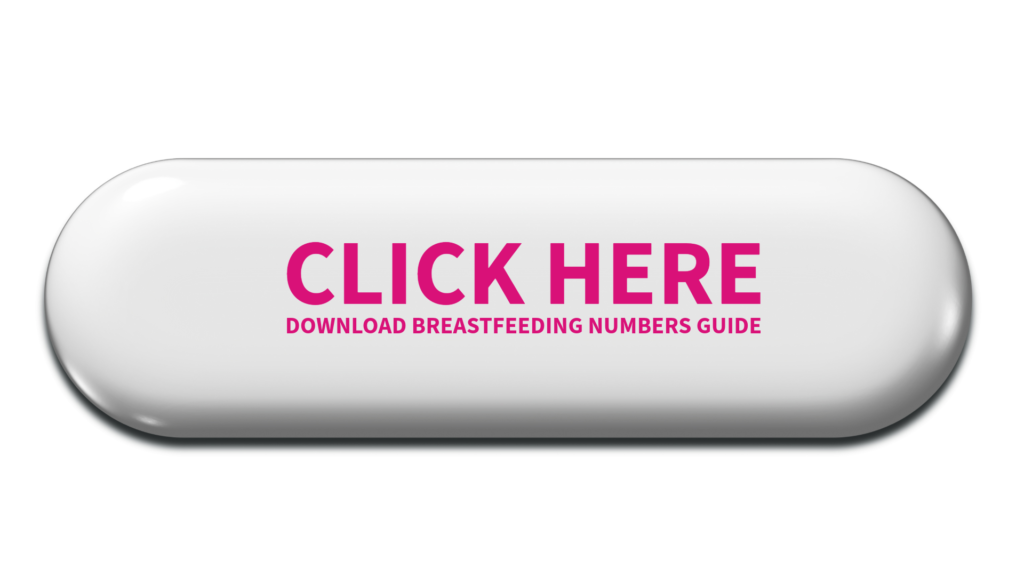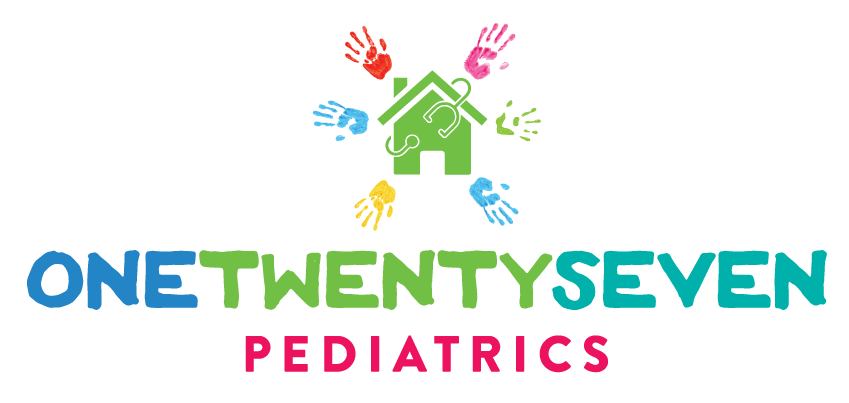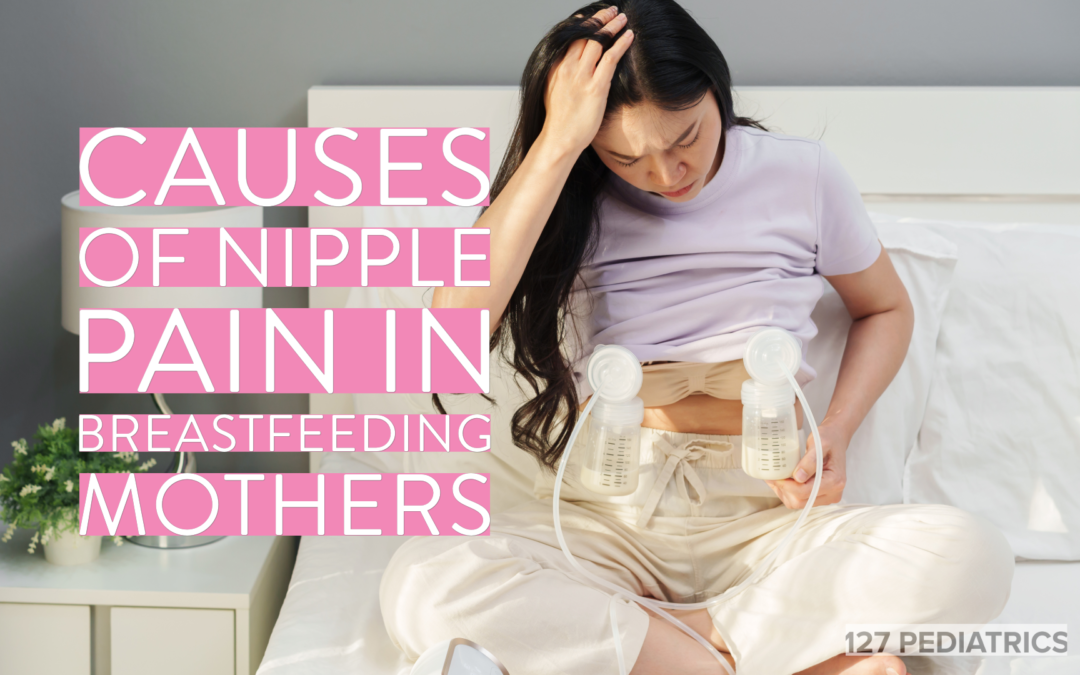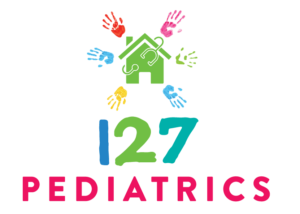Several years ago, a mother of one of my newest patients came to me with the complaint of nipple pain.
Mary was a first time mother to a sweet baby boy. She had been nursing him for the last 2 weeks since his birth. He was happily feeding at the breast and transferring milk well as evidenced by his robust weight gain. Her milk supply seemed to be stabilizing after she experienced engorged breasts the week before. Baby Tate was becoming more efficient at the breast and Mary’s nursing sessions were decreasing in length from 30 minutes per session to 20 minutes. She was grateful for all of her success, but she continued to have persistent nipple pain despite following the advice that I gave her over the phone.
In order to figure out why Mary was still experiencing sore nipples, I brought her into my office for an evaluation. There are many causes for nipple pain and a thorough history and physical exam can often reveal the cause of this complication of breastfeeding.
In this article, we will look at six common causes of nipple pain in breastfeeding mothers.
Normal Soreness
During pregnancy and postpartum, hormones play a key role in many processes within your body. After the birth of your baby, there is a dramatic shift in hormones as your body moves from maintaining a pregnancy to providing a nurturing environment for a new baby. There is a precipitous drop in the hormones estrogen and progesterone in order to make way for oxytocin and prolactin to take center stage for breast milk production.
As a result, when you first start breastfeeding you may experience some breast pain or tenderness, nipple sensitivity and nipple soreness. Hormonal shifts as well as the newness of latching a baby to your breast can lead to some pain during breastfeeding.
In this scenario, sore nipples are a result of the normal changes in your body that occur postpartum. This type of nipple pain should improve quickly over the period of a few days as your body adapts to these changes.
Additionally, mastering different breastfeeding positions and having a proper latch will result in less pain over time. Breastfeeding is a skill that takes time to learn.
Poor Latch
Just like learning how to position your baby for breastfeeding is a learned skill, so is establishing a proper latch. Both you and your baby are learning at the same time. I tell mothers that teaching the baby to latch on is just like any other skill that you will teach them as they grow.
A reason for sore nipples can be attributed to a poor latch. In order to have a good latch on at the breast, proper positioning is important.
First, you need to start by bringing the baby to you after placing the baby directly across from you at the level of the breast. In the early days of breastfeeding, I recommend using pillows in your lap to position the baby correctly. Next, you should elicit the baby’s rooting reflex by rubbing the side of their mouth against your breast until the baby opens wide. Finally, bring the baby in quickly for a latch on while their mouth is open widely. This will allow for a deep latch that includes part of the areola and not just the end of the nipple.
If you are having trouble with your latch, watch my YouTube video: The Keys to a Successful Breastfeeding Latch
If your baby doesn’t latch on deeply, likely he or she is latching just to the end of your nipples. This will lead to nipple pain pretty quickly. In addition to pain, you might notice cracking, bleeding or bruising of your nipple. Be sure to consult with a lactation consultant or other breastfeeding expert if you are experiencing these symptoms.
Make sure your baby latches on correctly every time with each feeding. All it takes is one poor latch on to lead to nipple damage and soreness. Over time, poor latching will have a negative effect on your milk production.
Engorgement
Around day 3 to 5 postpartum, most breastfeeding mothers experience lactogenesis 2 or the onset of copious milk production. This is also commonly known as the time that your milk comes in. As a result of this increase in milk production, you will experience a phenomenon known as breast engorgement. As the milk ducts fill with breast milk, the breast tissue surrounding the ducts will also fill with fluid and inflammatory cells. This rush of fluid and breast milk will make your breasts pretty full.
As a result of this process, your breasts will feel sore and hard. You will also likely experience nipple soreness. Likely, your baby will have difficulty latching to the breast due to this fullness.
In order to help the baby to move milk out of your full breasts without nipple damage, you can use a warm compress in the minutes before breastfeeding. This will help to increase milk flow out of the breast. Additionally, you can use a technique called reverse pressure softening to push back some of the fluid pressure around the nipple to make them softer for the baby to latch.
Lastly, you can take over the counter anti-inflammatory medication and use cool compresses on your nipples and breasts to relieve pain. Thankfully, engorgement resolves pretty quickly and you will feel relief from your pain.
Vasospasm
Vasospasm manifests as the constriction of blood vessels in the nipple. This constriction leads to decreased blood circulation which causes pain and impacts milk ejection. This condition can result in varying degrees of discomfort, ranging from mild irritation to intense pain. Symptoms typically include painful sensations occurring during, immediately after, or even between nursing sessions. Women with this condition describe the pain as a burning or throbbing sensation.
The human breast and nipple is a very vascular organ (full of blood vessels). These blood vessels allow mom’s circulation to interact with her breast milk in order to transport nutrients to the baby. As a result of this increased circulation, vasospasm can lead to painful white nipples and decreased milk flow.
Raynaud’s Phenomenon
Women with Raynaud’s phenomenon are more prone to nipple vasospasm.
Raynaud’s phenomenon occurs when small arteries that provide blood to the skin excessively constrict, particularly in response to cold conditions. This constriction restricts blood flow to the impacted areas, commonly affecting the fingers, toes, ears, and tip of the nose. Consequently, these regions may feel numb and cool when exposed to cold temperatures or during periods of stress. Additionally, changes in skin color often accompany these symptoms.
Generally, most women with nipple vasospasm find relief by warming their nipples with a heating pad or warm washcloth prior to feedings. Additionally, you can keep your nipples warm with wool breast pads between feedings. This can reduce the frequency of nipple pain due to this condition.
Dermatitis
Dermatitis is a medical word that we use to describe inflammation to an area of skin. The nipples are prone to dermatitis just like any other area of skin on the body. There are many things that can cause irritation to the nipple tissue. Most often, I see dermatitis of the nipple due to exposure to chemicals in things that interact with the nipple. Most often this is nipple ointment. In particular, many women have a sensitivity to lanolin in popular over the counter nipple ointments.
Additionally, dermatitis can be caused by anything that comes into contact with the nipple such as clothing, lotions, perfume or food just to name a few. On occasion, I have seen dermatitis on a mother’s nipple due to something on her toddler’s hands that was transferred to her skin and caused a reaction.
Nipple pain from dermatitis should always be considered in the differential diagnosis. In addition to pain, there is often redness of the skin or other signs of irritation.
Breast Pump Trauma
Exclusive or excessive use of the breast pump can cause nipple damage resulting in nipple pain. I see this most often when mothers are not using a correctly sized flange for the breast pump. Different pumps require different sizing parameters, but as a general rule your nipples should be centered in the flange and not rub against the tunnel of the flange while the pump is active. Using an incorrectly sized flange for your breast pump can result in nipple discomfort and potential damage.
When the nipple is not centered and gets rubbed against the side of the plastic, it can cause nipple pain. Furthermore, if the opening is too large for the nipple, it can draw in more breast tissue, resulting in pain. If it is too small, it can cause friction and pain at the base of the nipple or the areola.
Additionally, a high level of suction on a breast pump can cause pain and damage to these sensitive tissues. After the initial let down mode is finished, turn the suction up slowly to reach a comfortable pressure that allows for milk flow without causing pain or damage.
____________________________________________________________________________
As a dedicated breastfeeding medicine expert, lactation consultant and a mom who’s walked the same path, I’ve crafted something just for you – a free guide designed to demystify the numbers that often seem so daunting. “Crack the Secret Code of Breastfeeding Math” is more than just a guide; it’s a beacon of confidence on your breastfeeding journey.
This invaluable tool is here to reassure you that you’re not just on the right path, but thriving on it. Whether it’s understanding your baby’s weight gain, managing your pumping schedule, or ensuring you’re meeting those all-important breastfeeding milestones, this guide has got you covered.
Confident breastfeeding starts here. Download the guide by clicking the button below!

© 127 Pediatrics, April 2024
This article is for information purposes only. Please consult your personal physician for medical advice.

Dr. Andrea Wadley is a direct primary care pediatrician and breastfeeding medicine doctor. She opened 127 Pediatrics in July 2018 in order to provide a different option for pediatric and breastfeeding care to families in her local community. In addition to her pediatric practice, she provides in person and online breastfeeding consults and coaching.


